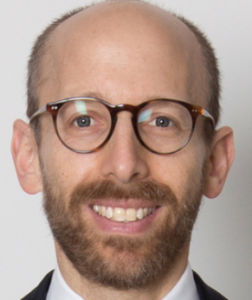
Diagnosed with a torn rotator cuff?
Have you been told that the only solution for torn rotator cuff is surgery?
When the rotator cuff is “torn,” this means that some tendon tissue has been separated, or pulled away from, the bone to which it’s supposed to be attached. Tendons join muscles to bone.
“The shoulder is a ball and socket joint,” says Edmond Cleeman, MD, a board certified orthopedic surgeon who specializes in sports medicine and arthroscopic surgery of the shoulder, knee and hip.
“There are four tendons that move the shoulder and they are called the rotator cuff tendons.
“Covering the entire rotator cuff is a bursa, a paper-thin fluid sac that helps gliding occur with less friction between surfaces.”
Does a torn rotator cuff automatically mean surgery?
“Rotator cuff tendon tears do not heal on their own and this has been verified with scientific study.
The tendon is attached to bone and when it tears it is pulled away from the insertion site by the muscle, like a rubber band snapping back.
“The only way for the tendon to heal is to pull it back to the bone insertion site and sew it to the bone.
“This procedure is customarily performed arthroscopically (minimal invasive surgery), with a regional anesthetic (the arm is numbed), and the patient goes home the same day.
“Success rates are high in small tears but success diminishes with increasing tear size.”
Rotator cuff problems are extremely common, and not just in athletes who do a lot of throwing or overhead movements.
People who don’t exercise are also vulnerable to rotator cuff injuries, particularly degeneration.
“Scientific study has demonstrated that rotator cuff tendon tears, if left unfixed, will increase in size,” says Dr. Cleeman, founding member of TRIARQ, a community of orthopedists and physical therapists.
“Eventually the tear will become large or massive and the results for surgical repair will diminish. Some tears will no longer be fixable.
“This is because the muscle attached to the torn tendon atrophies, contracts and essentially melts away.”
If the tear is partial or very small, this might be treatable without surgery; physical therapy would be the cornerstone of healing.
“But in these scenarios vigilant watch over the rotator cuff tendon tear with repeat MRI is a must. If the tear starts expanding then surgical repair is recommended.”
If the rotator cuff tear becomes too big, surgical repair may not be possible.
“The results after surgery for massive tears is significantly lower than small tears.
“The likelihood of being able to repair this tear is low because of the atrophy changes in the muscle and tendon.
“Non-surgical treatment starts by avoiding activities that cause pain and aggravate the rotator cuff tendons. These are mostly strength activities with the arm over shoulder height.”
 Dr. Cleeman is a highly experienced orthopedic surgeon and sports medicine specialist at Manhattan Orthopedics. He is committed to performing advanced minimally invasive procedures, allowing his patients to go home the same day.
Dr. Cleeman is a highly experienced orthopedic surgeon and sports medicine specialist at Manhattan Orthopedics. He is committed to performing advanced minimally invasive procedures, allowing his patients to go home the same day.
 Lorra Garrick is a former personal trainer certified through the American Council on Exercise. At Bally Total Fitness she trained women and men of all ages for fat loss, muscle building, fitness and improved health.
Lorra Garrick is a former personal trainer certified through the American Council on Exercise. At Bally Total Fitness she trained women and men of all ages for fat loss, muscle building, fitness and improved health.
.









































